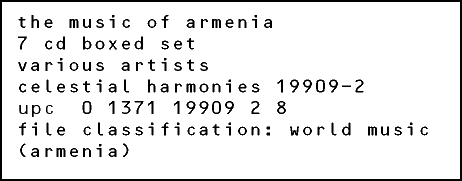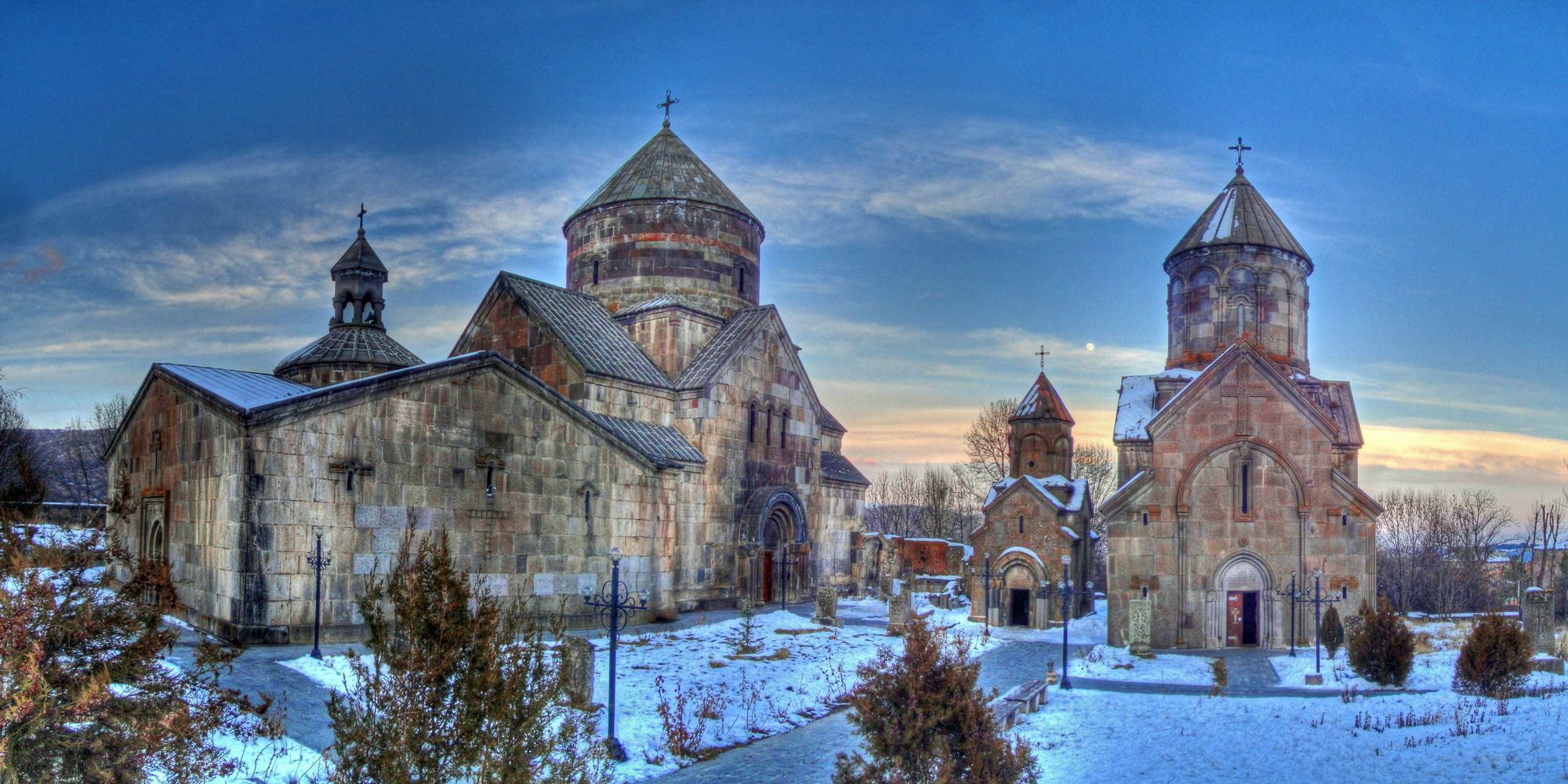



the project
The entire Music
of Armenia series began as a musical detour while David
Parsons was on assignment for Celestial Harmonies' The
Music of Islam (19907) series.
Fortunately, for our history—and evolution—the lost arts,
musically speaking, of this biblical area which has and continues
to travel the path of love, hatred and destruction, only to someday
be revered and loved again, is superbly recreated and created anew.
Covering the geographic area of Armenia, as well as the musical traditions,
Parsons discovered the most outstanding traditional music he had ever
heard. After listening to the first volume, Sacred
Choral Music, you too will mimic Parsons, whetting your
soul's appetite for more. The haunting, emotionally provocative liturgical
chants of the second volume,
Sharakan, stretches the soul to the depth of remembering—sadly,
yet lovingly with hope. Continuing on the wings of hope and time,
volumes three and four, Duduk
and Kanon, are largely eloquent instrumental transcriptions
of what were originally vocal works, songful and soulful as the first
two volumes. Folk
Music, volume five are songs and dances reflecting Armenia's
history and Nagorno-Karabakh
brings this musical evolution to the twentieth century featuring contemporary
folk music. Naturally, this volume is about the war and its consequences
yet maintains and even cultivates its Armenian roots.
While this series has an astonishing impact on Armenians and Westerners
alike, often invoking a deep emotional soul cry, what is most remarkable
and probably makes the biggest impact throughout each volume in this
series is the Armenian spirit, representing the human spirit. As we
listen we too feel the experiences and somehow, unbroken, the spirit
rises, lifting us up to continue...

the artists
Recreating the classical sacred choral music on Volume
One: Sacred Choral Music (13115)
is the famous Haissmavourk Choir directed by Mihran Ghazelian.
Volume Two: Medieval
Chant (13116) features the
acclaimed Sharakan Early Music Ensemble directed by Grigor Danielian,
accompanied by several guest artists. Most notably is soprano Anna
Mailian, Armenia's finest classical and operatic singer.
Departing from the sacred/classical
vocals, in Volume Three: Duduk (13117)
Gevorg Dabagian exquisitely demonstrates the versatility and depth
of the nearly 1,500 year old double-reed wind instrument duduk, in
traditional/folk music.
Volume
Four: Kanon (13118) continues with instrumental
works featuring the diversity of the zither-like kanon, played by
Karineh Hovhannessian. The final volumes focus on the broad folk music
of Armenia.
Volume
Five: Folk Music (14119) is a voluminous
double cd featuring The Shoghaken Folk Ensemble and The Sasun Folk
Group.
Volume
Six: Nagorno-Karabakh (13121) completes
the series of folk music featuring the songs of the war torn Nagorno-Karabakh
area performed by numerous laymen who are great virtuosos and remarkable
artists.
the series
| The Music of Armenia, Volume One:
Sacred Choral Music |
(13115) |
| The Music of Armenia, Volume Two: Sharakan/Medieval
Music |
(13116) |
| The Music of Armenia, Volume Three: Duduk |
(13117) |
| The Music of Armenia, Volume Four:
Kanon/Traditional Zither Music |
(13118) |
| The Music of Armenia, Volume Five: Folk Music/Shoghaken
Ensemble (2 CD) |
(14119) |
| The Music of Armenia, Volume Six: Nagorno Karabakh |
(13121) |







